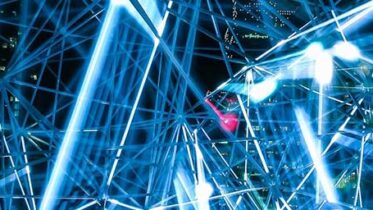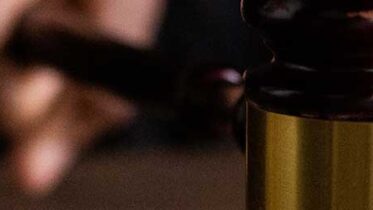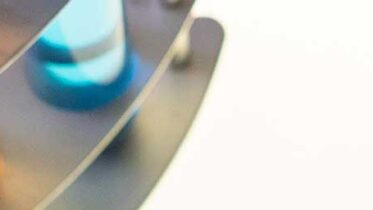Different ways of protecting Knowledge and its consequences
- 27 July 2022
- Articles
People that participate in research projects developed either by a public University or by a private company contribute, and certainly, also acquire or improve their knowledge regarding the subject of these research projects. Regarding the ownership of the results, the inventions made by the research personnel of the University in the performance of their duties, and regardless of the legal relationship by which they are bound, belong to said Organization. In turn, the inventions made by people that maintain a working relationship with a company, belong to the latter (art. 15 Patent Law), although when the employee makes an invention related to their professional activity in the company and, in addition, their achievement is predominantly influenced by knowledge acquired in it or using their own sources, the employer is entitled to assume ownership of the invention or to reserve the right to use it.
NON-DISCLOSURE AGREEMENTS
Given the nature of the information managed by said people, and in order to avoid future problems regarding the result of these projects, the parties shall enter into a non-disclosure agreement where it is determined which information is susceptible to be shared and used and where the use restrictions of this information are established. In said agreements, the disclosure of certain information and knowledge to third parties is prohibited, the use thereof is limited to the purposes agreed upon in the agreement and the term for these limitations is established for a specific period of time to avoid the information from becoming known by the competition once the agreement has been terminated.
Therefore, non-disclosure agreements are very useful in protecting information, knowledge, and data, thus avoiding these from being revealed or made public, since these prevent the free access to that information and avoid the future invention from being prejudiced, keeping in mind that the inventions to be protected as patents or utility models must be novel, i.e., not known by the public.
TRADE SECRET
Another useful way of protecting information and knowledge within a company is through a trade secret, which is that technological, scientific, industrial, commercial, organizational or financial information or knowledge that have a business value precisely because they are secrets and that the company has protected and maintained by implementing reasonable measures to that effect and that are sufficient to keep them a secret (art. 1 Trade Secret Law). A trade secret covers a wider range of information and knowledge than the non-disclosure agreement given that it does not relate only to technical information or knowledge but rather to any environment of the company, their “know-how”. However, the information that is a part of the professional skills, capabilities, and experience of a general nature of a person cannot be the object of a trade secret, nor the knowledge and relationships that the person may have with the clientele even when said skills or capabilities had been acquired through the performance of a certain position or of a determined set of roles performed for a certain employer, as is established by the sentence of Courtroom 1 of the Supreme Court dated November 24th, 2006 [ECLI:ES:TS:2006:7599
INVENTION PATENTS, UTILITY MODELS AND SUPPLEMENTARY PROTECTION CERTIFICATES FOR MEDICINES AND PHYTOSANITARY PRODUCTS
Another way of protecting inventions is through invention patents, utility models and supplementary protection certificates for medicines and phytosanitary products, provided they are novel, imply inventive step and are susceptible to industrial applicability. These types of protection offer greater security than a trade secret given that their holder may sue, by requesting the corresponding compensation for damages, any third party that uses that invention without previous authorization, being or not aware of the registration, while the trade secret is limited to people that are obliged to respect the secret and discloses it or uses it for their own benefit or of a third party.
When people that have previously developed a research project go on to perform their job in different companies or organizations than those where they have made those projects, belonging to the same sector, and those companies patent the employee’s invention, the dilemma arises on whether those people have carried out a lawful use of the training acquired from their participation in the research project or have breached the confidentiality duties by engaging in any concurrent unlawful act.
To determine if a breach of trade secrets has taken place, it will be decisive to know what specific information of the research project was unknown or secret, and whether the result of the research projects has been disclosed or been exploited as a trade secret, it will be necessary to analyze if all elements that make up the invention were already in the result of the research project, as well as determining whether the products in question are essentially the same and if the possible similarities belong or not to standardized knowledge, as is established in the Sentence of the Supreme Court 206/2022: ECLI:ES:TS:2022:206.
ACTS OF UNFAIR COMPETITION
The acts of unfair competition that could take place in these cases would be acts of imitation (art. 11), exploitation of the reputation of others (art. 12), violation of secrets (art. 13) and the inducement to breach of contract (art. 14).
In terms of imitation acts, we must keep in mind that the imitation of entrepreneurial or professional services and initiatives of others is free, unless they are covered by a right of exclusivity acknowledged by law, such as, a patent, or an intellectual property right. The imitation of services of a third party is unfair when it is ideal to generate the association by consumers regarding the service or it involves taking undue advantage of the reputation or efforts of others. Jurisprudence has been requiring that, for the undue advantage of the efforts of others to take place for the imitation of their services, a significant cost saving or reduction beyond what is considered admissible for the proper functioning of the market, and that is not justified, shall be involved. Likewise, jurisprudence has established that there shall be an imitation when essential, non-accidental or accessory elements with competitive uniqueness of a material creation have been copied.
On the other hand, in order to prove that there has been a lawful or unlawful use of the training acquired in the research project, a comparison of the invention just as it was patented (with all its technical features, not just the characterizing elements nor just the features that could be considered more innovative) and the documentation or the embodiment that meets the result of the research must be made.
Ultimately, in order to determine if there was any unfair behavior, it shall be determined whether there were any secrets (what specific information of the research project was unknown and had been stolen) and if the products are the same or not.










